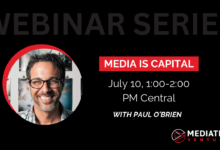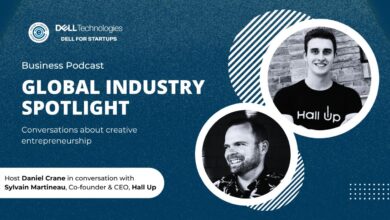The Social Music Tech Revolution

The fast-approaching upheaval to the way we socialize around music

If you are like me, then you are already overwhelmed by the frequency with which we’ve heard the phrase “nothing will be the same” in the past few weeks. Outside of the obvious health and medical implications to the world, we are seeing Covid-19’s wake impact almost every industry in existence. The effects on the technology world may be most at the forefront. The trends that many forecasted were going to manifest over the next five to ten years, may rapidly accelerate to the point of widespread adoption by the end of 2020. The primary candidates for disruption are those industries where we’ve prioritized in-person human interaction and given a backseat to technology. We now see that things like virtual workplaces, telemedicine, online classrooms and virtual concerts are rapidly working out their kinks and might be here to stay, in one form or another. While the above industries might be most in the spotlight, there is one much less discussed corner of the tech world that is particularly ripe for radical change: social music tech.
So what is social music tech, other than three very broad words lumped together? I view social music tech as the products which leverage both music, something inherently social in its very nature, and technology in order to uniquely spark conversation and interaction. Ok — yes, still sounds pretty vague and hippy dippy. Sorry about that. Perhaps a better way to understand what social music tech is and what it could be, would be to dive into how we socialize around music today. Let’s zoom in on three key questions:
1. How do I send a song recommendation to a friend? There are a few different direct message options in the social space, but most people send a lengthy URL or album screenshot via text message
2. How do I find out if my friend enjoyed the song? Hope that your friend drops everything, listens to the full song, and responds with a response. Most of the time this doesn’t happen, so true feedback is delayed or never received
3. How do we learn what our friends are listening to? Outside of 1-to-1 messaging, social media and public playlisting is our best opportunity to observe the music taste of our friend network. While a few have utilized these tools well, the majority have not adopted consistently.

To summarize, social music tech today is largely just a bunch of ‘add-ons’ to ways that we already communicate. The social media revolution that we have seen over the past two decades has seemed to halt when it comes to music. To put it metaphorically, we enjoy the benefits of smartphone technology when it comes to socializing about work, school projects, videos, spreadsheets, you-name-it, but when it comes to socializing about music, we must go back to using a pager or landline. We send something over to a friend and wait for them to call us back at some point in the future. This is social music tech today, and social music tech today is broken.
So why have we not seen a social music tech revolution?
We have incumbent music streaming platforms, but they seem to have largely regressed from social rather than move forward. Spotify used to allow for things like direct messaging, but that was removed years ago. If we dig into the start-ups which have attempted to solve this problem, we can actually find a pretty large graveyard of companies that failed to gain traction. After speaking at lengths with start-up founders, music tech investors, and music tech product leaders, a few explanations have emerged for the lack of impactful innovation:
1. “The Universal Player” — Charlie Kaplan, Audiomack VP of Product, is a social music tech thought leader who came across my radar when I heard him speak on a podcast about this very topic. Intrigued by this interview, I reached out and he shared the concept of the “Universal Player” with me. Charlie argues that a major inhibitor to capable social music tech is the fact that the music streaming market is highly fragmented. My friend group might be split among Spotify, Apple Music and Amazon Music, therefore, it is extremely difficult to share and collaborate. In his insightful Medium article, he writes “Imagine if you couldn’t text a friend because she decided to sign up for a cellular plan through Verizon and you chose AT&T”. The lack of a Universal Player oftentimes stops the conversation before it can even begin!\

2. Don’t Launch a Network — The concept of ‘network effects’ has been studied at length around the product world. A common example points to the idea of a singular telephone being useless, and the dangers and beauty of a product that derives its value from a network of people using it. Most of the failed social music tech launches can be chalked up to the fact that founders create a product or platform whose potential value is entirely contingent upon many people using it. Charlie Kaplan advises to “create a great single player mode in order to earn your multi player or social mode”. Take Instagram as an example: they initially built a product that would add professional filters to your personal photos. This was a fantastic “single player mode”, and once they gained a significant userbase, they were able to flip the switch on a “multi-player mode” and allow this userbase to connect and socialize with each other. You know what happened next!
3. High effort leads to high turnover — While there is no shortage of press relating to today’s vast mobile app landscape, the discussion of app turnover is much less discussed. The stark reality is that 1 in 4 downloaded apps are only used once. As of 2019, music apps have a 3.5% retention rate after 30 days. Users are looking for low effort and high reward when it comes to their initial 30 day experience with an app. The poison pill that has existed within the music app space, is the false assumption that users will be willing to adjust their listener habits for a new app. Wrong! Users have a routine when it comes to where they consume music (usually on their preferred streaming service), and how new music is discovered. Anytime a new technology asks a user to alter this or provide additional manual effort, the app usually finds its way to the dumpster.
So now that we’ve cleared up what social music tech is, the ways that it is broken today, and outlined why exactly a “success story” can’t be found, let’s dive into what the “winner” might look like in the future:
1. Leverage My Data — One of the most discussed trends of the last five years has been that of “big data”. The most innovative products have found a way to utilize data that we already create in order to deliver actionable value back to us. Listener data is something that we create by the truckload today, yet it is largely left untouched. You may be asking the question: “Hold up — companies like Spotify and Pandora are already leveraging my data really well — through creating personalized playlists and radio stations that I love”. Yes — this is true — but this is leveraging listener data for discovery rather than social. Think about it — when was the last time that your listener data uniquely sparked a social interaction for you? The most successful example that we have seen is the “Spotify Wrapped Campaign” which happened at year end. We finally got a glimpse under the hood of our listener data, and people showed up on social media in record numbers to discuss the data.The social music tech solution will not just leverage data for social purposes annually…instead it will constantly leverage this data every second in order to visually show where my music taste overlaps with friends, where the opportunities for recommendations and discovery are, as well as areas where brands/labels/artists might be able to join in the conversation and monetize users. The latter of which might be most important for a start-up to enter the space and remain afloat. After speaking with Conor Healy, Director at Music Tech Investment Group Raised in Space Enterprises, he mentioned that “Turntable.FM is a prime example of the challenges surrounding these companies. Despite scaling to millions of users, Turntable never found effective ways to monetize these users. That, along with licensing challenges/label relations ultimately stifled growth and led to the platform’s swift demise”.

2. The Gamification of Gratification — Who doesn’t love the feeling of a successful music recommendation? We tell a friend about a song we think they’ll love, then the next day they tell us how we hit the nail on the head. This feels good as hell! It is a rush of serotonin, and to be honest, it’s downright addicting. It’s the reason that John Cusack is making mixtapes in High Fidelity, and my friends and I constantly fight over the aux chord when we’re in the same car. What if we could both bottle the social gratification from a successful song recommendation, and increase the frequency that these “lightning bolts” occur? The successful social music tech of the future will leverage data and gamification in order to tap into the serotonin release of a recommendation gone well. As a song is recommended to a friend, the life of that song will then be tracked moving forward. Was it listened to 35 times by the recipient? Forwarded to 6 friends? Added to their “Sweat It Out” playlist? All of these insights are incredibly valuable. If they are successfully delivered back to the recommender, we now have a very sticky product. Now what if this were boiled down to an “influencer score” that could be competed and boasted amongst friends? John Cusack might own a tech company rather than a record store.
3. Let Me Consume — As of 2019, 40,000 new songs were added to Spotify every day. That’s insane. For many of us, this is entirely too much. The content overload has left many people huddled in a corner in the fetal position, listening only to the music they’ve always known and loved. When we think about it, however, music isn’t the only medium which has experienced a boom in content. We have seen similar trends within news, video, sports, health, and countless other areas. The only difference between music and the rest is the fact that music has not drastically evolved in how we consume. We need to look no further than Instagram to see how content delivery has evolved for Millenials and Gen Z. In 2018, the content format of the “story” surpassed the “feed”, growing at a rate 15x that of feeds. Lengthy, permanent content feed posts have taken the backseat to quick, temporary story posts that are a maximum of 15 seconds. Consumers have short attention spans and they want to find the newest and best content with minimal effort. I am not arguing that artists need to reduce the length of their songs. I am arguing that the social music tech of the future will find a way to deliver moments of discovery within short and powerful song clips, no longer than 15 seconds, in a convenient place where users are already consuming.
So here we sit in 2020, at a time when music is entering the world at a faster rate than ever before. People are creating incredible content, but when it comes to how we communicate and socialize around it, our hands are tied by the lack of tailored technology. Barriers such as the lack of a universal music player may continue to inhibit growth, though the advances of things like audio fingerprinting and AI based music cataloging could open the floodgates to easier communication sooner rather than later.
I look forward to a day in the not so distant future where we will look back with a playful ridicule, wondering out loud “how did we ever put up with this?”. We will remember a time when “social music tech” was not widely known, and we were seemingly ok with using traditional solutions to talk about the artists and songs that we love. We may even cringe at the thought of having to copy a 28 character song URL into a text message to share our music taste with a friend. The tools were all around us — how did we not realize the solution was right under our nose?
Closing where I began this article, the industries that are most ripe for disruption are those where we have not invited technology to the table to add value to the conversation. Now is the time to invite technology to the table when we’re talking about music. The groundbreaking social music tech era is right around the corner….can you hear it coming?







Entirely accurate. “Social” (be that social media or social network) is a matter of the community; the people. Fragmentation prevents it from working. Evident in (like it or not) Facebook, a perception and expectation is there that ‘everyone is there’ and thus is delivers value to the user.
Today as someone explores social in other forms of media (music, as well as video, gaming, podcasting, etc.); when friends are not found on the platform, OR the means of distributing and communicating with those people on other platforms is lacking, the social experience fails. Social isn’t a matter of merely sharing and communicating, it’s that everyone you expect to be there in fact is.
This is such a good read! Innovation in this space that hits these buttons on the head will be a total disrupter!
Great article
Thank you for sharing this info
Good stuff Jack Diserens
Great work, Jack!